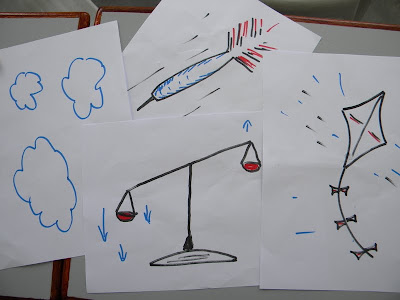Mr. T travels to the Maldives Islands to provide professional development to the teachers at Meynaa School on Holhudhoo Island. Everything in this blog is true, except for what's not.
Tuesday, May 31, 2011
Little kids have the most fascinating expressions...
Changes I've made on the island....
 |
| Recently, I gave up wearing my hat..... in exchange for the shade provided by.... |
 |
| My new bright red umbrella! |
 |
| Now this change did not come about because of the rain.... since the rains had not yet started when I actually bought the umbrella..... rather... I got the umbrella for... |
Classroom management 101
Assessment.... it's a BIG deal!
 |
| This workshop on assessment was one of the first sessions I held with the teachers. It was intense, fast paced, with lots of activities. |
 |
| Diagnostic Assessment When: before instruction What: to find out what the child already knows. Why: to plan next steps Examples: pre-test, IQ test |
 |
| Formative Assessment When: during instruction What: part of the classroom routine Why: to help with lesson planning Examples: quiz, homework, review games, lab work |
 |
| That's me in this summative assessment drawing! |
 |
| Can you guess which of the three types of assessment this one is showing? |
 |
| Diagnostic assessment..... and so proud of it! |
Monday, May 30, 2011
Island life, business, offices, and so forth
 |
| One of the three restaurants on Holhudhoo Island. |
 |
| Boat building and repair is one of the few industries on the island. |
 |
| The two story blue building is the island's indoor sports center. Directly in front of the sport's center is one of the island's mosques. |
 |
| The inside of the sport's center. |
 |
| The island's administrative office. |
 |
| The diesel powered electric power plant. |
 |
| The island's cemetery. |
 |
| Fishing is both an industry in the Maldives as well as a sport. |
 |
| Lots of little stores can be found on the island. This one is selling mainly clothing. |
 |
| Theses are almost like convenience stores, carrying a little bit of everything... bottled water, stationary, canned foods, soap, snacks.... |
 |
| A few of the little stores also carry fresh fruits (apples and oranges) and vegetables (potatoes, carrots, and onions). |
 |
| I think I've counted three trucks on the island. Few motorcycles and the health center has an ambulance. One can pretty much walk along any street on the island and not worry about traffic. |
 |
| Many of the houses have large plastic containers for storing rain water. This is the water that people rely heavily upon for their source of drinking water. |
 |
| Crows are everywhere on the island. I've not been able to get a photo yet of the huge flying bats. Actually, the bats are larger than the crows! |
 |
| Children's play ground area. |
 |
| The island has a health center with one doctor. |
 |
| Rajan is the health center's lab technician. |
It's all in how we look at ourselves... and others too!
 |
Now, should Mr. T take this guy's advice and buy that gel? |
 |
| Or should Mr. T take this guy's advice and buy this gel? |
Listening... it's more than just your ears!
 |
| Good listening skills involve more than just your ears! |
 |
| Mr. T explains to the teachers how their students' listening skills can be developed over time.... using some fun and rather unusual approaches. |
Subscribe to:
Comments (Atom)

























